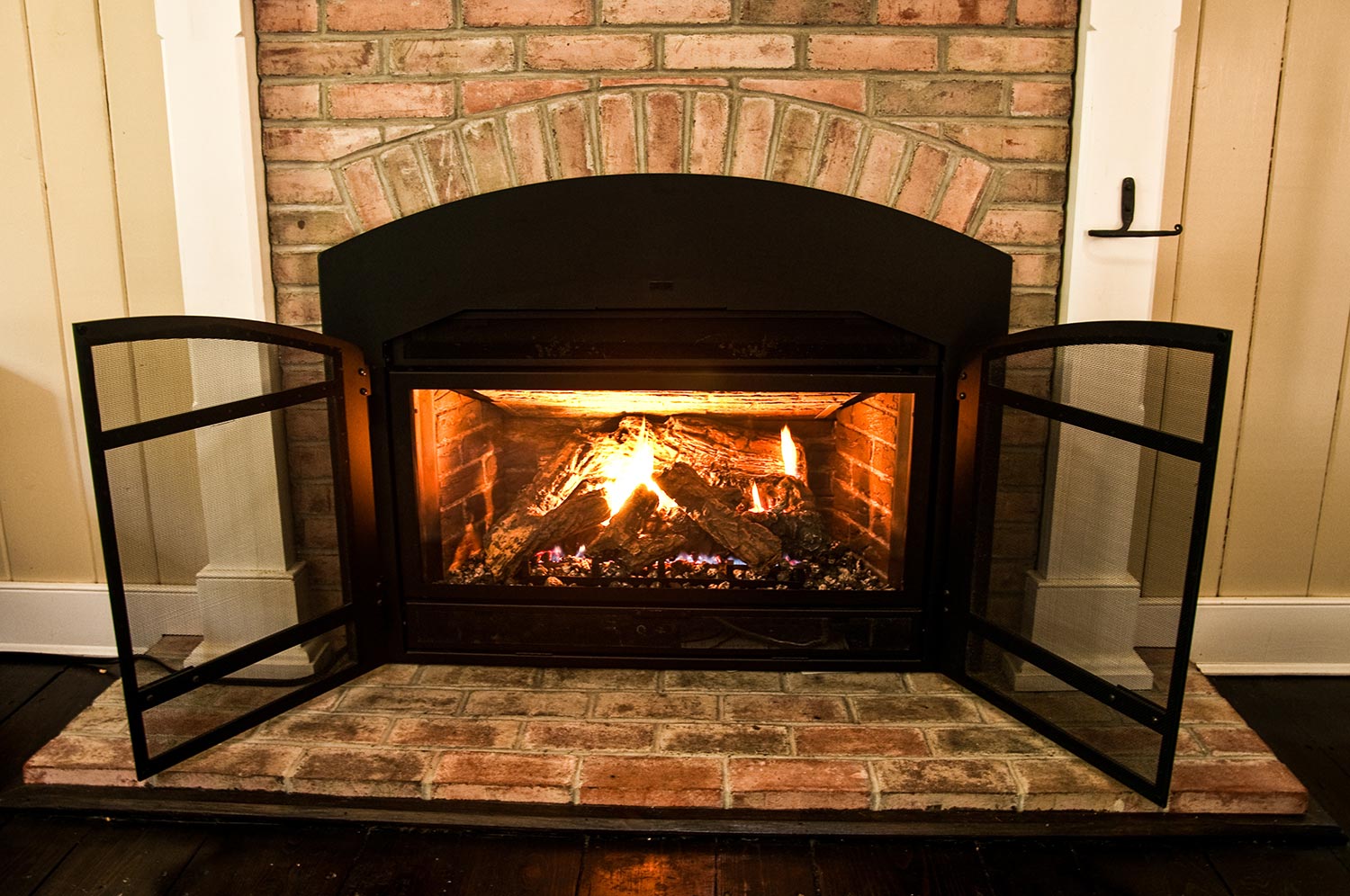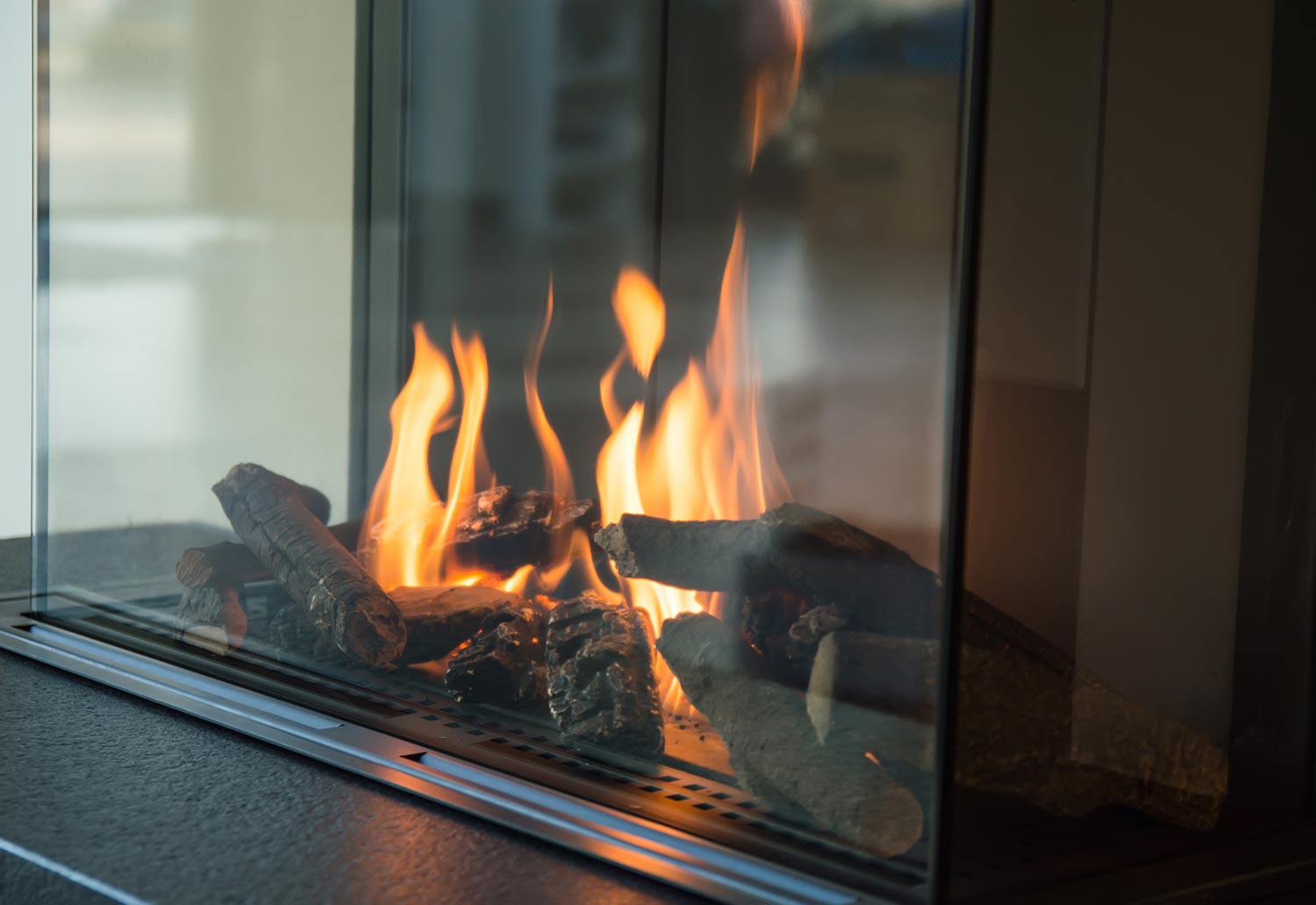As summer approaches and the weather gets warmer, you are most likely looking forward to spending more time outside soaking up the warm breeze rather than indoors by your gas fireplace. One question you might be pondering is if you should turn your gas fireplace off or not. We have thoroughly researched this question, and here are our findings.
Yes, you should turn off your gas fireplace during summer. Leaving it on burns gas which costs you money. It also heats your home, thereby giving your air conditioner the extra task of reversing the increased temperature.
While gas fireplaces are more appealing and convenient to use than the traditional fireplace with wood, there are rules you need to follow to use them safely. Read along as we closely examine the proper ways to operate a gas fireplace, including how to restart it after summer.

Does a Gas Fireplace Have an Automatic Shut-off?
There are different types of gas fireplaces, and each has its own set of safety features, but almost all gas fireplaces come with a built-in fail-safe shut-off valve.
This valve automatically turns off the gas flow of your gas fireplace if the pilot flame goes out. It also comes with a pre-installed safety pilot, which automatically shuts off gas flow if it detects that the temperature in the gas fireplace is too cold or releases excessive carbon monoxide produced by the incomplete combustion of fuels.

All of these features contribute to the safety of your gas fireplace and home, but regularly checking for hazards in your fireplace is recommended to prevent household incidents.
Can You Leave a Gas Fireplace On All The Time?
Turning on a gas fireplace is an easy process, sometimes involving just a flicker of the switch or remote. When the temperature is cold, all you want is to feel warm and cozy, but how long should your fireplace be on? The answer to this question is based on your specific type of gas fireplace.
If you use a direct vent gas fireplace with a sealed glass front, you can leave it running for hours. On the other hand, if you use a vent-free gas fireplace, it is advisable not to leave it on for more than 3 hours.

Also check out: "Should Fireplace Vent Be Open?"
It should be noted that a vent-free gas fireplace does not affect your indoor air quality because a glass panel demarcates the burning section from inside, directing any possible toxins outside your home.
Using a vent-free fireplace comes with risks as they produce trace amounts of carbon monoxide and nitrous oxide that can be fatal in large doses. Regardless of the type of gas fireplace you use, always make sure your room is adequately ventilated.
Can You Sleep With a Gas Fireplace On?

You might be tempted to leave your gas fireplace on and take a quick nap during the cold nights, but this is dangerous as there is a risk of carbon monoxide poisoning, which can be fatal.
This gas is commonly referred to as the silent killer because early inhalation symptoms are nearly undetectable. Once carbon monoxide gets to your lungs, it starts to bind with hemoglobin, and then it is delivered to your body cells. The level of exposure and concentration determines the effect, so falling into a deep sleep or even a short one with your gas fireplace on isn’t advisable.
Though not as deadly, sleeping with your fireplace on can also cause discomfort after a few hours. You might fall asleep enjoying the warmth only to wake up feeling sweaty and hot.
A smoke or carbon monoxide detector should also be installed in your house to detect hazards quickly. Always keep a lookout for any unusual flames, odors, or gas smells that indicate an issue. In case of suspected exposure, immediately turn off your fireplace and call your local gas company or heating technician for assistance.
How Do You Start a Gas Fireplace After The Summer?

Now summer is over, how do you get your gas fireplace up and running again? You might be worried about the safety precautions involved with re-starting a gas fireplace, but you would be just fine as long as you follow the proper safety procedures.
Keep in mind that the brands and types of gas fireplaces vary, and each might have slightly different safety precautions than the other. Nevertheless, the following procedures apply to most gas fireplaces.
- Carefully read your gas fireplace manual to understand better how the controls work.
- Ensure the gas valve is opened if there’s one on your gas fireplace.
- Remove the firescreen to gain access to where the control is located.
- Switch from "Off" mode to "Pilot" mode by turning the control dial.
- Once the pilot is lit, turn the pilot knob to the “On” position.
- Finally, you can turn on your main burner switch using your burner switch thermostat remote control.
If the pilot doesn't light up at your first attempt, keep trying until it does. If after so many trials it still doesn't turn on, try resetting the control dial to "Off” then try again. According to the instructions in the manual, you may have to wait a particular amount of time between attempts.
Also check out: "How Often Should You Clean Your Fireplace?"
In Closing
Gas fireplaces are popular because they are more efficient and environmentally friendly. They produce less smoke, gas emissions, and ash than wood fireplaces, which means you don’t have to clean up as often. Plus, gas fireplaces provide an instant source of heat and warmth without the mess or hassle of starting a fire.
As with other appliances in your home, gas fireplaces should be maintained regularly, whether during winter when it is in constant use or summer when you turn them off. Depending on the type of gas fireplace you own, turn them off occasionally, especially at night before sleeping, to avoid carbon monoxide poisoning or discomfort from excessive heat.
Now you have the necessary information about the best practices you should follow when using a gas fireplace, you can save cost and enjoy warmth all year round while keeping your home safe from hazards.
